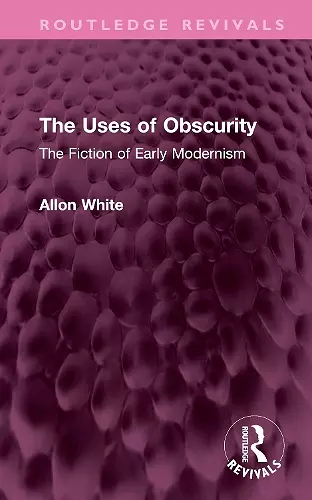The Uses of Obscurity
The Fiction of Early Modernism
Format:Hardback
Publisher:Taylor & Francis Ltd
Published:1st Dec '23
Currently unavailable, and unfortunately no date known when it will be back

Originally published in 1981, this book examines why and how textual difficulty became a norm of modernist literature and questions how we can begin to account for the forms of obscurity and difficulty which developed in the late 19th Century and which became so important to modernism. The author argues that the decline of realism entailed the growth of ‘symptomatic’ or ‘subtextual’ reading which tended to treat fiction as compromised autobiography. This kind of reading left the author dangerously isolated and exposed in the midst of a newly sophisticated public. Within this general cultural perspective, the book traces the private anxieties that led George Meredith, Joseph Conrad and Henry James to conceal themselves within their complex and resistant fictions. It discusses opacity in the texts themselves – embarrassment and shame in Meredith; ‘engimas’ in Conrad; and the fear of vulgarity and knowledge in Henry James.
‘The outcome is a criticism which is pleasantly unpretentious, yet well able to handle sophisticated theory…’ Jeremy Lane,The Yearbook of English Studies, Vol 15.
‘White has given the reader abundant food and numerous directions for thought.’ Eugene Hollahan, Studies in the Novel, Vol 14, No. 3.
ISBN: 9781032645933
Dimensions: unknown
Weight: 420g
198 pages